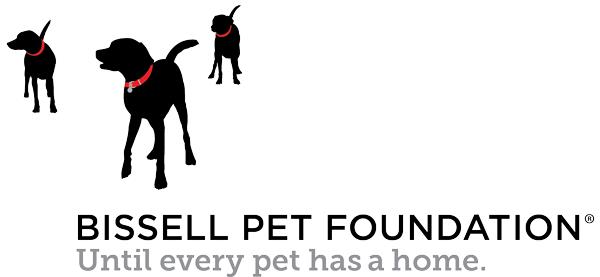
If you ever wonder if your dog's bark is worse than his proverbial bite, the answer may lie no further than your next-door neighbor. Some canine behavior problems, such as house soiling, affect only a dog's family. But problems such as escaping and excessive barking can result in neighborhood disputes and violations of animal control ordinances, and that means problems with your pet can soon become “people problems.”
Learn Why Your Dog Barks
If your dog's “talkative nature” has created tension with your neighbors, then it's a good idea to discuss the problem with them. It's perfectly normal and reasonable for dogs to bark from time to time, just as children make noise when they play outside. But continual barking for long periods of time is a symptom of a problem that needs addressing, from the perspectives of your neighbors and your dog.
First, determine when and for how long your dog barks and what causes him to bark. You may need to do some clever detective work to obtain this information, especially if the barking occurs when you're not home. Ask your neighbors what they see and hear, drive or walk around the block and watch and listen for a while, or start a tape recorder or video camera when you leave for work. With a little effort you should be able to find out which of the common problems discussed below is the cause of your dog's barking.
Social Isolation/Frustration/Attention-Seeking
Your dog may be barking out of boredom and loneliness if:
-
He's left alone for long periods of time without opportunities to interact with you.
-
His environment is relatively barren, without companions or toys.
-
He's a puppy or adolescent (under three years old) and doesn't have other outlets for his energy.
-
He's a particularly active type of dog (like the herding or sporting breeds) who needs to be occupied to be happy.
Recommendations
Expand your dog's world and increase his “people time” in the following ways:
-
Walk your dog at least twice daily. It's good exercise, both mentally and physically. Walks should be more than just “potty breaks.”
-
Teach your dog to fetch a ball or Frisbee and practice with him as often as possible.
-
Teach your dog a few commands or tricks and practice them every day for five to 10 minutes.
-
Take a dog training class with your dog. This allows you and your dog to work together toward a common goal.
-
To help fill the hours that you're not home, provide safe, interesting toys to keep your dog busy, such as Kong®-type toys filled with treats or busy-box toys. Rotating the toys will make them seem new and interesting.
-
If your dog is barking to get your attention, make sure he has sufficient time with you on a daily basis (petting, grooming, playing, exercising).
-
Keep your dog inside when you're unable to supervise him.
-
Let your neighbors know that you are actively working on the problem.
-
If your dog is well socialized and you have your employer's permission, take your dog to work with you every now and then.
-
When you have to leave your dog for extended periods of time, take him to a “doggie day care center,” hire a pet sitter or dog walker, or have a trusted friend or neighbor walk and play with him.
Territorial/Protective Behavior
Your dog may be barking to guard his territory if:
-
The barking occurs in the presence of “intruders,” which may include the mail carrier, children walking to school, and other dogs or neighbors in adjacent yards.
-
Your dog's posture while he's barking appears threatening, tail held high and ears up and forward.
-
You've encouraged your dog to be responsive to people and noises outside.
Recommendations
-
Teach your dog a “quiet” command. When he begins to bark at a passerby, allow two or three barks, then say “quiet” and interrupt his barking by shaking a can filled with pennies or squirting water at his mouth with a spray bottle or water squirt gun. His surprise should cause him to stop barking momentarily. While he's quiet, say “good quiet” and pop a tasty treat into his mouth. Remember, the loud noise or water squirt isn't meant to punish him; rather it's to distract him into being quiet so you can reward him. If your dog is frightened by the noise or squirt bottle, find an alternative method of interrupting his barking (perhaps throw a toy or ball near him).
-
Desensitize your dog to the stimulus that triggers the barking. Teach him that the people he views as intruders are actually friends and that good things happen to him when these people are around. Ask someone to walk by your yard, starting far enough away so that your dog isn't barking, then reward quiet behavior and correct responses to a “sit” or “down” command with special treats such as little pieces of cheese. As the person gradually comes closer, continue to reward your dog's quiet behavior. It may take several sessions before the person can come close without your dog barking. When the person can come very close without your dog barking, have him feed your dog a treat or throw a toy for him.
-
If your dog barks while inside the house when you're home, call him to you, have him obey a command such as “sit” or “down,” and reward him with praise and a treat. Don't encourage this type of barking by enticing your dog to bark at things he hears or sees outside. Remember to pay attention to your dog when he's being quiet too, so that he comes to associate such behavior with attention and praise.
- Have your dog spayed or neutered to decrease territorial behavior.
Fears and Phobias
Your dog's barking may be a response to something he's afraid of if:
-
The barking occurs when he's exposed to loud noises such as thunderstorms, firecrackers, or construction noise. Your dog's posture indicates fear; ears back, tail held low.
Recommendations
Identify what's frightening your dog and desensitize him to it. You may need professional help with the desensitization process. Talk to your veterinarian about anti-anxiety medication while you work on behavior modification. During thunderstorms or other frightening times, mute noise from outside by leaving your dog in a comfortable area in a basement or windowless bathroom, and turn on a television, radio, or loud fan. Block your dog's access to outdoor views that might be causing a fear response by closing curtains or doors to certain rooms. Avoid coddling your dog so that he doesn't think that he is being rewarded for his fearful behavior.
Separation Anxiety
Your dog may be barking due to separation anxiety if:
-
The barking occurs only when you're gone and starts as soon as, or shortly after, you leave.
-
Your dog displays other behaviors that reflect a strong attachment to you, such as following you from room to room, greeting you frantically, or reacting anxiously whenever you prepare to leave.
-
Your dog has recently experienced a change in the family's schedule that means he's left alone more often; a move to a new house; the death or loss of a family member or another family pet; or a period at an animal shelter or boarding kennel.
Recommendations
Some cases of separation anxiety can be resolved using counter conditioning and desensitization techniques. Successful treatment for some cases may also require the use of medication prescribed by your veterinarian. (See our “Separation Anxiety” fact sheet for more information.)
Bark Collars
There are several types of bark collars on the market. We generally don't recommend them, unless used under the supervision and instruction of a qualified obedience instructor. The main drawback of any bark collar is that it doesn't address the underlying cause of the barking. You may be able to eliminate the barking, but symptom substitution may occur and your dog may begin digging or escaping, or become destructive or even aggressive. A bark collar must be used in conjunction with a trainer and behavior modification that addresses the reason for the barking, as outlined above. You should never use a bark collar on your dog if his barking is due to separation anxiety or fears or phobias because punishment always makes fear and anxiety behaviors worse.
Adapted from material originally developed by applied animal behaviorists at the Dumb Friends League, Denver, Colorado. ©2000 Dumb Friends League and ©2003 The HSUS.





